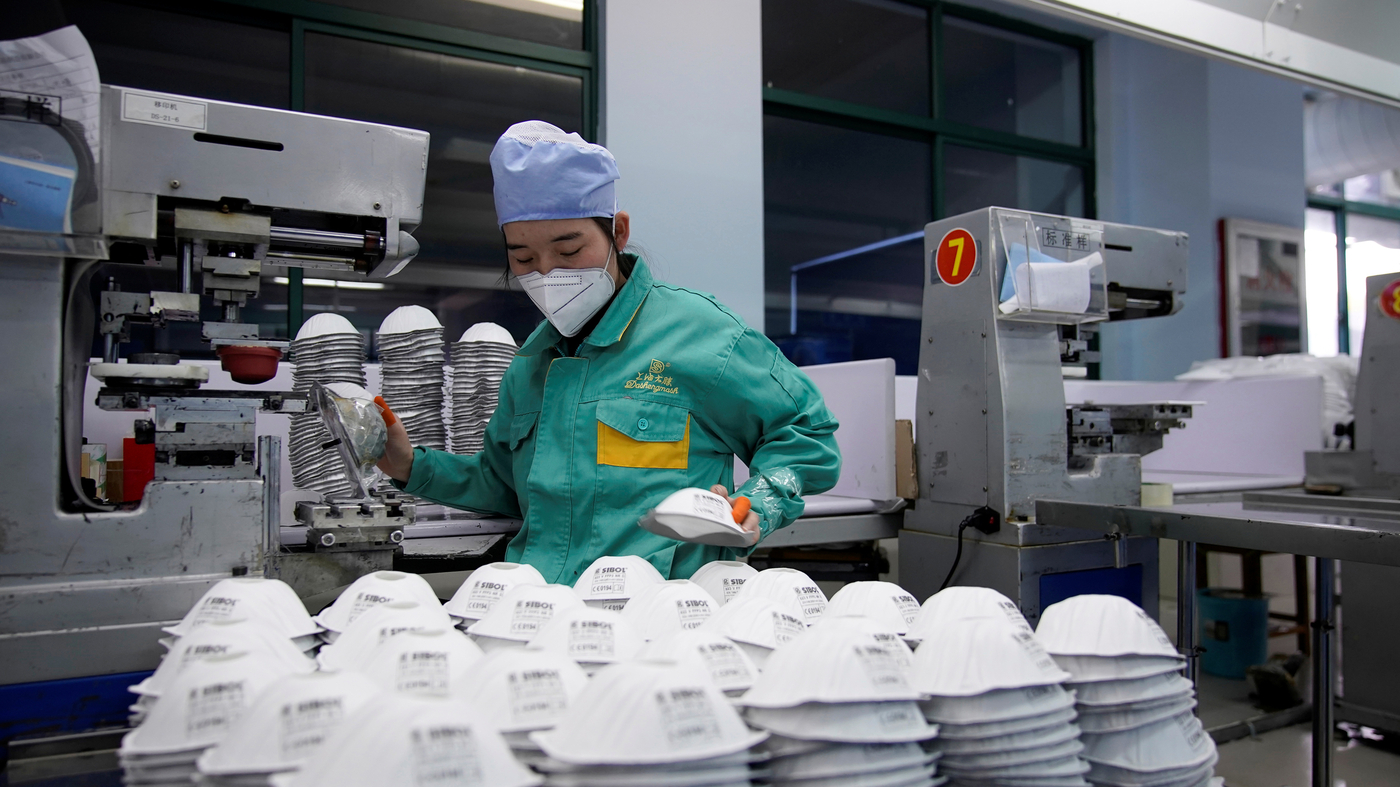--
But this ambitious effort has run into a bottleneck.
Both the masks made for medical personnel and for consumer purchase require a once-obscure material called melt-blown fabric. It's an extremely fine mesh of synthetic polymer fibers that forms the critical inner filtration layer of a mask, allowing the wearer to breath while reducing the inflow of possible infectious particles.
"We're talking about fibers where one filament has a diameter of less than one micron, so we are in the nano area," said Markus Müller, the sales director at German company
Reicofil, a major provider of melt-blown machine lines.
And there's now a global shortage of melt-blown fabric due to the increased demand for masks — and the difficulty in producing this material.
Costing upward of 3.8 million euros ($4.23 million) apiece, the machine that creates this fabric melts down plastic material and blows it out in strands, like cotton candy, into flat sheets of melt-blown fabric for face masks and other filtration products. A similar line of machines can create a related kind of fabric, called spun-bond fabric, also used in face masks and in medical protection suits worn by health-care workers.
The machines are not easy to make because of the exacting precision required, says Müller: "You need to stretch these fibers by hot air, and [the air] needs to be in perfect condition over the width of the machine. The biggest dilemma is that many of the machines are not producing consistent quality."
Reicofil's Müller says he gets more than four dozen requests a day, mainly from China, to buy melt-blown fabric and production lines but has to turn nearly all of them away; making a single machine line takes at least five to six months.
Chinese firms
make nearly three million tons of nonwoven fabric a year, according to the China Nonwoven and Industrial Textiles Association, a state industry body. Less than 1% of that is melt-blown fabric.
To fill the deficit of melt blown fabric, this month, China
said state oil and gas firm Sinopec was investing 200 million yuan, or about $29 million, to start ten new melt blown production lines with production lines supplied by Sinopec subsidiary Yanshan Petrochemical.
Timothy Robson, a business development manager at
Hills, Inc. in Florida, is skeptical of the quality of such production lines, which must meet precise standards to produce the kind of masks worn by medical staff. Hills Inc. is one of the handful of companies in the world that can make the hand-drilled die tips for the machines. The melted plastic is blown out through the tips.
"[These machines] are not like a toaster. It's not something you buy and then you plug in. It's an industrial process," Robson told NPR by phone. "China can be all over the place. Sometimes you think you're in a Western factory. Others are kind of like a dirt floor sort of shanty trying to pass their stuff off as good as the other guys. And maybe it is."
Chinese engineering firms say they're struggling. "We need about six months to make the machines, and it takes another month to assemble them," said Leo Liu, a sales director at Haigong Machinery, a Chinese company that assembles the machine parts for melt-blown lines imported from the US, Germany and Japan. "Everyone is considering mask manufacturing, but they don't understand the process. Once they learn the cost of these machines, they give up."
--



